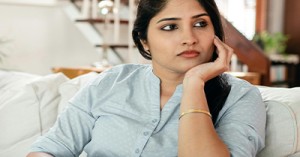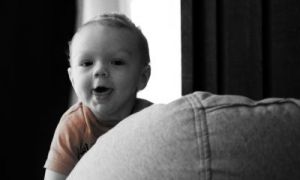It's so exciting to notice your baby's very first tooth coming through. Most babies “grow” their first tooth at around 4 -6 months of age. Sometimes a tooth can appear without any warning signs at all and sometimes you may notice a small bulge on the gum or a red patch on the gum or cheek, followed in a couple of days by a tooth. However some babies can feel great discomfort during teething,they may be grizzly, wake in the night, dribble more than usual or cry during feeding.
Teething Signs
Below are a list of teething signs you can use to determine whether or not your baby is teething.
- A red cheek – You may notice a red patch on your baby's cheek.
- Swollen gums – Check your baby's gums for puffy or inflamed gums.
- Pain – Your baby may be showing signs of discomfort and pain.
- Irritable – Your baby can be grizzly and grumpy. Usually your baby will be more clingy during this time.
- Dribbling – More saliva is produced during teething which will make your baby dribble more than usual.
- Waking up – Your baby may begin to wake up during the night crying.
- A temperature – Your baby may feel a little hotter than usual with a slight temperature.
- Nappy rash – Some babies develop nappy rash during teething and may have diarrhoea.
It is important not to confuse these teething signs with an illness. Teething may cause discomfort and irritability but it doesn't cause an illness. It is important for you to be able to recognize if your baby is unwell and to act promptly. If you have any concerns regarding your child's health, please consult your doctor immediately.
How your Baby's Teeth Form
Usually your baby's two front teeth at the bottom emerge first, quickly followed by the two front teeth at the top. These four teeth are called “central incisors” and are used for biting. The teeth on either side of the central incisors appear next, often two at a time. These are called “lateral incisors”. The next teeth to emerge are the four back teeth – the first molars. Two appear in the lower jaw followed by two in the upper jaw. These teeth are what your baby will use for chewing, which is why “molars” have a flat grinding surface. Next to arrive are the longer, pointed teeth called “canines”, which emerges in both jaws. Lastly the second set of four molars appears at the back of your baby's mouth, giving your child a grand total of twenty teeth.
How to Soothe Teething Pain
Here are a list of hints that you could use to help sooth your baby's teething pain.
- Give your baby a quick breast feed.
- Massage your baby's gums gently with your finger (wash your hands first).
- Try rubbing teething gel (Bonjella) onto your baby's gums (read directions carefully for how often you can apply the teething gel).
- Rub a partially thawed ice cube over your baby's gums.
- Sucking, biting or chewing on something can help sooth your teething baby. These items can include a dummy (try and limit a dummy to bed and nap times because it can result in your baby having a prominent upper jaw and protruding teeth). Water filled teething rings are also helpful especially if you cool them in the refrigerator before offering it to your baby. Crunchy finger foods, such as lightly cooked carrot, toast or apple slices (only if your baby has begun eating solid foods).
Now that your baby's teeth are beginning to emerge it's important for you to begin to take care of them. By taking care of your baby's teeth right from the start ensures that your child will have a healthy mouth and strong teeth right up until adulthood.
Teething may be an unpleasant experience for your little one but it is an essential part of your child's development. As your baby begins on solids, your baby's teeth become increasingly important as they begin to develop the skills of biting, chewing and grinding.
I hope that this article has provided you with an understanding of your baby's teething process and has given you the confidence in dealing with your baby's teething.










